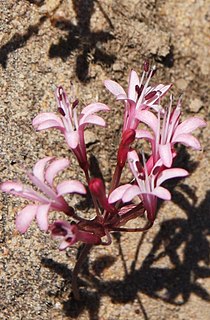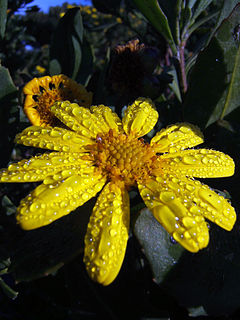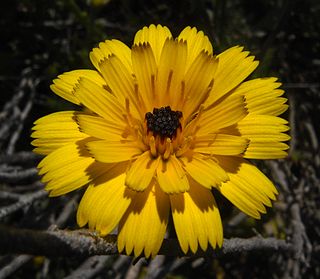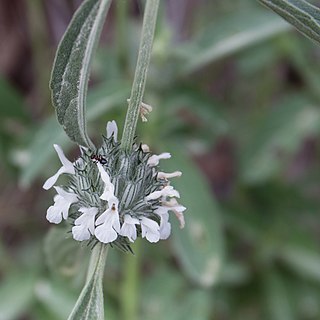
Osteospermum, is a genus of flowering plants belonging to the Calenduleae, one of the smaller tribes of the sunflower/daisy family Asteraceae. They are known as the daisybushes or African daisies.

Hoodia is a genus of flowering plants in the family Apocynaceae, under the subfamily Asclepiadoideae, native to Southern Africa.

Euclea, from the Greek eukleia meaning "glory and fame", denotes a group of flowering plants in the Ebenaceae or ebony family. They were described as a genus by Linnaeus in 1774. The genus includes evergreen trees and shrubs, native to Africa, the Comoro Islands and Arabia. Several species are used for timber, producing a hard, dark heartwood timber similar to ebony.

The Gnaphalieae are a tribe of flowering plants in the family Asteraceae. It is most closely related to the tribes Anthemideae, Astereae, and Calenduleae.

Strumaria is a genus of African plants in Amaryllis family, subfamily Amaryllidoideae. The genus is known in nature only from South Africa, Lesotho and Namibia. Almost all species flower in the autumn and are cultivated as ornamental bulbous plants.

Chrysanthemoides is one of eight genera of the Calenduleae, with a centre of diversity in South Africa. The genus contains only two species, but is known for the invasive "Bitou Bush" Chrysanthemoides monilifera. Studies of this genus have determined that there is a large amount of genetic variation between populations, suggesting an extreme adaptive capability in the plants. Some of these variations are recognised, such as Chrysanthemoides monilifera subsp. rotundata.
Amellus is a genus of flowering plants in the family, Asteraceae described as a genus by Linnaeus in 1759.
Anaxeton is a genus of flowering plants in the family Asteraceae.
Antithrixia is a genus of flowering plants in the daisy family, Asteraceae.
Arrowsmithia is a genus of flowering plants in the daisy family, Asteraceae.
Disparago is a genus of flowering plants in the family Asteraceae.
Elytropappus is a genus of flowering plants in the family Asteraceae, native to southern Africa.
Galeomma is a genus of African flowering plants in the family Asteraceae.

Tolpis is a genus of flowering plants in the dandelion tribe within the daisy family. It is native to Africa, Southern Europe, the Middle East and Macaronesia. Many species are limited to the Canary Islands.

Didelta is a genus of shrubs of up to 1 or 2 meter high, with two known species in the daisy family. Like in almost all Asteraceae, the individual flowers are 5-merous, small and clustered in typical heads, and are surrounded by an involucre, consisting of in this case two whorls of bracts, which are almost free from each other. The 3–5 outer bracts are protruding and triangular in shape, the inner about twice as many are lance-shaped and ascending. In Didelta, the centre of the head is taken by 3–5 clusters of bisexual yolk yellow disc florets, sometimes divided from each other by male disc florets, and is surrounded by one complete whorl of infertile yolk yellow ray florets. The common base of the flowerhead swells around the developing fruitlets, become woody and breaks into segments when ripe. The fruitlets germinate within this woody encasing. The species of the genus Didelta can be found in Namibia and South Africa. The genus is called salad thistle in English and slaaibos in Afrikaans.
Foveolina is a genus of flowering plants in the daisy family, native to southern Africa.

Acrotome is a genus of plants in the family Lamiaceae, first described in 1838. The genus is native to the southern part of Africa.
Dicerothamnus is a genus of flowering plants belonging to the family Asteraceae.
Hilliardiella is a genus of flowering plants belonging to the family Asteraceae.
Myrovernix is a genus of flowering plants belonging to the family Asteraceae.








